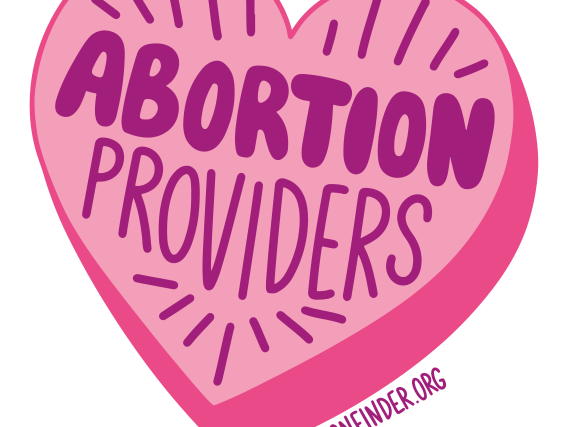It’s Election Season – How to Make Sure Your Voice is Heard
It’s early February and depending on where you live (hello, Iowa and New Hampshire) or how much of a political junkie you are, you might either feel like the 2020 election season has been going on forever or is just beginning for real. Either way, this is no time to tune out – there’s so much at stake when it comes to the information, access, and opportunity that ensure everyone has the power to decide if, when, and under what circumstances to get pregnant and have a child.
For sure, there’s the question of who is elected President. But there are also very important races for about one-third of the US Senate, and all US House seats. In addition, there are key elections for Governors and members of state legislatures. As my colleague Tara Mancini wrote recently, state policy matters a lot. All of these policymakers have a big impact on key issues related to high-quality sex education, access to birth control, insurance coverage of birth control, and access to the full spectrum of reproductive health services, including abortion. What’s more, there are the big issues of health care coverage and affordability more broadly, which are getting quite a bit of attention.
What can you do to make sure your voice is heard?
- Make sure you’re registered to vote. Even if you think you are, it’s smart to double check. And if you’re not yet registered, you can take care of that here.
- Know key dates and voting information in your state. Here are resources for registration deadlines (go to info about your state), dates of primaries (many of which are coming up soon), dates for early voting and deadlines for absentee ballots, and information about where you vote.
- Get smart about the contraception policy and access landscape in your state.
- Remind candidates that birth control is not controversial; au contraire, it is widely popular.
- Ask candidates questions at town halls, through social media, and if they show up at your door or in your community. Below are a few questions you could ask, along with some supporting information. And make sure to check back at our Get Involved page in the coming weeks for more information.
Key Questions for Candidates
What is your plan to make affordable, quality contraception available to all women, regardless of income or where they live?
Nearly 20 million US women with low incomes live in contraceptive deserts—counties in which there is not reasonable access to a health center offering the full range of contraceptive methods. Of those 20 million women, roughly 1.6 million women live in counties without a single health center that offers the full range of contraceptive methods. These access barriers put women already struggling to make ends meet at risk of not being able to get the birth control method right for them. These women might face additional transportation costs, childcare costs, or unpaid time off work because of the long distances they need to travel to access care. Check out our interactive maps for your state.
What would you do to reverse the harmful impact of the “domestic gag rule” and ensure that the Title X Family Planning Program is able to continue to provide quality, affordable services to low-income women, including access to the full range of contraceptive methods?
For nearly 50 years, the Title X Family Planning Program has provided federal funding to health centers that provide free or low-cost birth control and related services. The Trump Administration has undermined the ability of Title X health centers to provide quality care by enforcing the “domestic gag rule.” The gag rule forces health centers that receive Title X funds to withhold information from patients about abortion services and care. To date, approximately 8.8 million women in need live in counties that have lost Title X support for reproductive health care access. The loss of funds is likely to result in increased costs, shorter hours, and fewer services being offered by impacted centers. For women living paycheck to paycheck, losing affordable access to the birth control they need because the health center they depend on has lost its Title X funding compromises their reproductive health and well-being.
What would you do to support national standards for high-quality, culturally competent sex education? What would you do to continue evidence-based programs such as the Teen Pregnancy Prevention (TPP) Program and the Personal Responsibility Education Program (PREP) so young people have accurate, reliable, and research-based sexual health information?
The funding and quality of sex education programs varies significantly based on where you live, and such inconsistency leads to a lack of information or misinformation that fails to meet the needs of many young people. All young people deserve quality, fact-based sex education and the data show that those who have access to high-quality sex education have fewer unplanned pregnancies, are better able to finish school, increase their earning potential, and have the power to plan their futures and achieve their dreams. The teen birth rate in the United States has steeply declined since the 1990s – decreasing 72% since 1991 before falling an even steeper 58% between 2007 and 2018. Even with dramatic progress among teens across the board, there are persistent disparities by race/ethnicity and geography. High-quality, evidence-based teen pregnancy prevention programs also enjoy broad public approval: 85% of adults favor maintaining federal funding for the TPP Program and PREP. This support cuts across political, racial, ethnic, and geographic lines.
What steps would you take to ensure that women’s access to abortion is preserved, no matter where they live?
Women need quality information about contraception and access to the full spectrum of reproductive health services, so they have the power to decide if, when and under what circumstances to get pregnant and have a child. Abortion is a part of the full spectrum of reproductive health services. Access to abortion is being increasingly threatened, especially for low-income women, despite public support. A majority (54%) of Americans believe that abortion should be legal in all (23%) or most (31%) cases, while four in 10 (40%) believe that abortion should be illegal in most (25%) or all (15%) cases. There is no state in which more than one-quarter of residents say abortion should be illegal in all cases.
Armed with this information, we encourage you to get involved, spread the word, and make sure your voice is heard.


